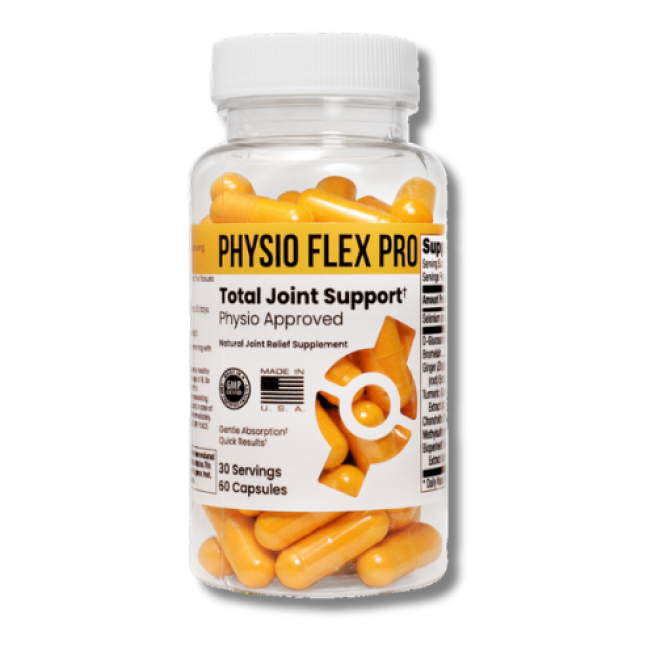Have you ever woken up and felt your ear throbbing in pain after sleeping on your side?
People who tend to sleep on one side of their body for hours are more prone to a condition called pillow ear. While it’s not serious, it can be highly uncomfortable and painful at times.
Today, we’re discussing relief options for ear cartilage pain when sleeping on the side and how to avoid future risks.
What is Ear Cartilage Pain?
Understanding the Anatomy of the Ear

The auricle or pinna is the medical term for the outer ear. The outer ear is made up of cartilage and skin and is composed of three different parts – the tragus, helix, and lobule.
The auricular cartilage is the firm, flexible tissue that makes up the outer ear. It’s covered in skin and attached to the skull with ligaments and muscles, which helps maintain the ear shape and allows it to be flexible enough to bend.
A thin layer of tissue called perichondrium surrounds the cartilage, which protects and provides nutrients, while the pinna is also rich in sebaceous glands that protect the ear from cracking.
Causes of Ear Cartilage Pain
There are a lot of things that could cause pain in the ear cartilage, but the following are notorious factors, which are both exacerbated by the pressure of sleeping on one side of the body.
Auricular Chondritis
Auricular chondritis is a medical condition that refers to the inflammation and pain of the ear cartilage. This condition occurs as a result of repetitive trauma in the ears, where blood can build up under the skin and result in a hematoma, which could eventually become inflamed.
Auricular chondritis occurs in more people who suffer from relapsing polychondritis, a rare autoimmune condition where the auricular, nasal, and tracheal cartilages are recurrently inflamed. Studies show that over 80% of patients with relapsing polychondritis will experience auricular chondritis.
Perichondritis
Perichondritis is a bacterial infection of the tissue lining the cartilage of the outer ear, often due to an injury or trauma. It’s also sometimes called auricular perichondritis.
The most common cause of perichondritis is high ear piercings through the cartilage. This type of piercing damages the cartilage and allows bacteria to penetrate it. Other factors like burns, insect bites, and other ear infections can also cause perichondritis.
Chondrodermatitis
Chondrodermatitis nodularis helicis (CNH) is a benign inflammatory condition that affects the skin and cartilage of the pinna. Here, the ear cartilage suffers inflammation, and a small hard bump appears. After some time, crusting and lesions also appear.
Doctors believe that chondrodermatitis is caused by sun damage and pressure, which weaken and thin the skin. The thinned skin and cartilage are damaged by pressure and cause swelling, lump, and crusting to occur and are likely subject to greater pressure.
Other factors like prolonged usage of headphones, hearing aids, or other headgear and frequently sleeping on the same side every bedtime contribute to the risk of chondrodermatitis.
Why Side Sleepers Experience Ear Pain
When a person sleeps on the same side for too long, the ear cartilage gets folded against the pillow and feels a more constant pressure, causing the pain receptors to get irritated. The ear apex is an auricular pressure point located on the cartilage where your ear comes to its highest point.
Sleep is often difficult because laying on the swollen ear triggers auricular pain and pressure. Since the soft tissue is inflamed with the skin stretched and no fat padding present in the area, the pain will worsen with palpation or pressure applied to the ear, which occurs when one is sleeping on the side of the affected ear(s) for a long time.
The inflamed ear cartilage and the pressure of sleeping on the affected side eventually cause the ear to appear red, warm, and puffy. Since the outer rim of the ear doesn't have much tissue under the skin, it doesn't have much blood supply, making one more prone to developing sores from pressure.
The Science Behind Ear Pain While Sleeping
Recent Studies and Findings
Studies show that the incidence of relapsing polychondritis is extremely rare - with an estimated incidence is 1 in 285,000, appearing to affect both sexes and all ethnicities, but with a higher prevalence among Caucasians. An overwhelming majority of these cases tend to experience auricular chondritis.
In one study involving chondrodermatitis nodularis chronica helicis patients, the participants complained of a painful nodule on the helix or antihelix of the pinna. The patients also reported that the infection manifests more often on the right than the left.
Research shows that neglecting perichondritis can cause an abscess, which causes perichondrial elevation from the cartilage, resulting in devascularization, necrosis, and deformation of the pinna, with the scarred tissue giving the appearance of a cauliflower ear. Not seeking proper and immediate medical treatment can also lead the condition to progress to a serious soft tissue or systemic infection.
Studies also single out transcartilagenous ear piercing as a greater cause of ear damage, particularly ear cartilage pain, infections, and inflammation. This type of piercing, when compared to lobule piercings, poses a higher risk of infections, swelling, or abscess buildup.
Diagnosing Ear Cartilage Pain
When To See a Doctor
The sooner you consult a doctor/healthcare provider, the faster your recovery process will be. It’s important to seek medical attention when you notice the symptoms. Leaving the affected ear untreated leads to continuous pain and could worsen the infection, possibly leading to abscess formation.
What To Expect During A Medical Evaluation
Your healthcare provider will perform a physical examination on the affected ear to diagnose any possible ear cartilage-related infections. The attending healthcare provider will also ask about your medical history – disclose any recent trauma to your ear, such as piercings, burns, cuts, acupuncture procedures, and other injuries.
Your doctor might advise you to avoid wearing high ear piercings, stop playing contact sports, and not scratch or touch your ears too much. They may also advise you to opt for softer, more ergonomic pillows for lesser pressure and greater comfort.
Treatment and Management Strategies – Preventing Ear Cartilage Pain
Medical Interventions
- Non-steroidal anti-inflammatory medications – NSAIDs and corticosteroids can help decrease the pain and swelling in the affected ear and may unclog pus buildups.
- Antibiotic ointments – Topical medications like fluoroquinolone and ciprofloxacin can also help relieve inflammation and provide analgesic effects.
- Taking dietary supplements – Supplements that include glucosamine, chondroitin & MSM can help reverse inflammation in the ear cartilage. Chondroitin, itself a major component of human cartilage, helps protect the ear cartilage, prevents it from further damage, and provides pain relief.
- Surgical procedures - In case of a trapped pus buildup, surgery may be necessary to drain the fluid and remove any dead skin and cartilage. In more serious cases, when the infection has worsened and damaged the ear cartilage, the affected part may have to be removed surgically.
Home Remedies and Lifestyle Adjustments
Here are some easy-to-do home remedies to help relieve ear pain and discomfort
Use a cold compress
Place an ice pack on the affected ear for 5 – 10 minutes. Do this three times a day to help reduce the inflammation and swelling in the ear.
Choose a good pillow and take good care of it

Try a CNH pillow.
CNH pillows are designed with a hole or indentation to alleviate pressure on the ear while sleeping. This design is beneficial for people suffering from ear pain for several reasons:
-
Pressure Relief: The key feature of a CNH pillow is its ability to relieve pressure from the affected area of the ear. By having a space where the ear can rest without contact, it prevents further irritation of the sensitive nodule.
-
Pain Reduction: For sufferers of CNH, even the slightest pressure on the ear can be painful. These pillows help in reducing pain by minimizing contact and pressure on the ear.
-
Improved Healing: By reducing pressure and friction on the ear, these pillows can aid in the healing process of CNH, allowing the skin and cartilage to recover more effectively.
-
Comfort for Side Sleepers: Side sleepers are particularly prone to developing CNH due to the constant pressure on one side of their ear. A CNH pillow allows side sleepers to continue sleeping in their preferred position without exacerbating the condition.
-
Better Sleep Quality: By minimizing pain and discomfort, CNH pillows can significantly improve the quality of sleep for individuals suffering from this condition.
Overall, CNH pillows are a practical and effective solution for those suffering from Chondrodermatitis Nodularis Helicis, providing much-needed relief and promoting better sleep and healing.
If you don't want a special pillow then be sure to check your current pillows.
A good quality pillow is a great way to help prevent ear cartilage pain and ensure better sleep. The harder your pillow is, the greater the pressure it will have on your ear, so it’s best to opt for a softer fill like goose down.
Don’t forget to fluff it daily and shake it thoroughly from end to end and side to side daily will help keep the pillow in good shape.
Always make sure to keep your pillow clean and dry. A damp and unkempt pillow can contribute to ear infections, aside from making sleep deeply uncomfortable. Clean your pillows in warm temperatures and with hypoallergenic detergents.
Using pillow protectors and soft pillowcases lessens friction and keeps the pillows clean and comfortable. They also prevent dust mites and other insects from inhabiting the pillow.
Proactive Measures
Tweaking your sleeping habits can also make a difference in preventing ear pain. If you are a side sleeper, you could try to switch sides more often during bedtime.
You can also wear soft earmuffs to minimize pressure on the ears. Otherwise, if you sleep through the night, simply adjust your pillow or opt for a new, softer pillow with a comfortable pillowcase/pillow protector.
You can also try to use two or more pillows so your affected ear is higher than the rest of your body. Sleeping upright or on a reclined armchair can also be effective until the pain and inflammation disappear completely.
FAQs - Common Questions About Ear Cartilage Pain
1. What are the best sleeping positions for preventing outer ear cartilage pain?
For short-term relief, sleeping upright on a recliner is a great help when resting with ear cartilage pain. If you’re uncomfortable with sleeping upright, try sleeping on your back while using two additional pillows by your sides to help support and restrict you from rolling to your natural side sleeping position.
2. Can ear cartilage pain indicate a more serious condition?
Ear cartilage pain may be a symptom of auricular chondritis, perichondritis, or chondrodermatitis.
3. How can I differentiate between cartilage pain and an ear infection?
Ear cartilage pain is often a result of an infection of the outer ear, while ear infections are a general term for both inner and outer infections.
4. Are there any specific pillows or sleeping aids that can help with ear pain?
Goose down, latex, or feather pillows are softer and have less pressure on the ears. Pillow protectors and pillowcases lessen the friction and offer sanitary protection to the ears.
5. How long does ear cartilage pain typically last?
Ear cartilage pain can persist for up to a month but can clear up within 3 days of proper treatment.
Conclusion
Side sleepers often struggle with pillow ears, which can cause great pain and discomfort with mobility. Often due to outer ear infections, adopting simple changes like opting for better pillows, new sleeping positions, and proper medication can relieve the pain in no time.
If you’re experiencing persistent or severe ear pain, consult an otolaryngologist or your trusted healthcare provider to address symptoms and discuss possible treatment options.






